
A team of researchers led by an archaeologist at the University of Sydney are the first to suggest that eyed needles were a new technological innovation used to adorn clothing for social and cultural purposes, marking the major shift from clothes as protection to clothes as an expression of identity...
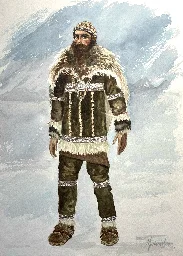
A team of researchers led by an archaeologist at the University of Sydney are the first to suggest that eyed needles were a new technological innovation used to adorn clothing for social and cultural purposes, marking the major shift from clothes as protection to clothes as an expression of identity.
"Eyed needle tools are an important development in prehistory because they document a transition in the function of clothing from utilitarian to social purposes," says Dr. Ian Gilligan, Honorary Associate in the discipline of Archaeology at the University of Sydney.
From stone tools that prepared animal skins for humans to use as thermal insulation, to the advent of bone awls and eyed needles to create fitted and adorned garments, why did we start to dress to express ourselves and to impress others?
Archaeologists made an intriguing find this week at Michigan's Colonial Michilimackinac, Mackinac State Historic Parks officials said, an 18th century brass trade ring.

Archaeologists made an intriguing find this week at Michigan's Colonial Michilimackinac, Mackinac State Historic Parks officials said, an 18th century brass trade ring.
Researchers with the archaeological program at the Mackinaw City museum identified the piece as a trade good sometimes known as a "Jesuit Ring," parks officials announced in a press release.
"It's incredibly exciting," Dominick Miller, chief of marketing for Mackinac State Historic Parks, told The Detroit News.
Better than Strange Brew?
god was just trying to get Judean citizenship this whole time, and we accidentally made a religion out of it. Whoopsie doodle.
A team of geneticists and archaeologists affiliated with multiple institutions in France has uncovered skeletons in an ancient gravesite not far from Paris that show evidence of steppe migrant integration with Late Neolithic Europeans. The study is published in the journal Science Advances.

A team of geneticists and archaeologists affiliated with multiple institutions in France has uncovered skeletons in an ancient gravesite not far from Paris that show evidence of steppe migrant integration with Late Neolithic Europeans. The study is published in the journal Science Advances.
Prior research has shown that there was a slow migration of herding people from what is now Russia and Ukraine to Europe thousands of years ago. During the migrations, many of the migrants (who were mostly male) produced children with the local farmers they encountered.
In this new study, the research team reports evidence of such reproduction in remains found in an open grave in the Champagne region of France. Skeletons in the grave showed evidence of a native European woman who had produced a child with a steppe migrant.
Herders carved names, slogans, nude silhouettes and more into the trees around them during lonely seasons in the mountains. Now, researchers rush to find and record the arborglyphs before they disappear.
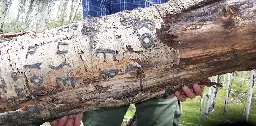
Throughout the mountains of the American West, carvings hidden on the trunks of aspen trees tell the stories of the sheepherders who made them as they passed through with their flocks. Most of the men who etched these arborglyphs into the living trees were Basques who, starting with the Gold Rush of the 1840s, had immigrated from the Basque Country that straddles the Pyrenees Mountains.
A controversial bill that would have allowed developers to build on archaeological sites in some environmentally sensitive coastal areas was overhauled on June 19.

A controversial bill that would have allowed developers to build on archaeological sites in some environmentally sensitive coastal areas was overhauled on June 19.
Language that would have allowed builders to disturb archaeological resources in the course of development in the coastal Areas of Environmental Concern was removed from House Bill 385 entirely. After being introduced earlier this month, that original proposal met widespread opposition from Native Americans in North Carolina and the state's Department of Natural and Cultural Resources.
Archaeologists preserve records of their excavations, but many are never analyzed. Digital archaeology is making these records more accessible and analyzing the data in new ways.

The ancestors of Alaska Native people began using local copper sources to craft intricate tools roughly 1,000 years ago. Over one-third of all copper objects archaeologists have found in this region were excavated at a single spot, named the Gulkana Site.
This is the site I’ve studied for the past four years as a Ph.D. student at Purdue University. In spite of its importance, the Gulkana Site is not well known.
To my knowledge, it isn’t mentioned in any museums. Locals, including Alaska Native Ahtna people, who descend from the site’s original inhabitants, might recognize the name, but they don’t know much about what happened there. Even among archaeologists, little information is available about it – just a few reports and passing mentions in a handful of publications.
However, the Gulkana Site was first identified and excavated nearly 50 years ago. What gives?
Archaeology has a data management problem, and it is not unique to the Gulkana Site. U.S. federal regulations and disciplinary standards require archaeologists to preserve records of their excavations, but many of these records have never been analyzed. Archaeologists refer to this problem as the “legacy data backlog.”
As an example of this backlog, the Gulkana Site tells a story not only about Ahtna history and copperworking innovation, but also about the ongoing value of archaeological data to researchers and the public alike.
Wait, so he's admitting hunter's laptop is a hoax? Or is his ephedrine addled brain having trouble keeping track of all of the lies?
The fuck is the "laptop from hell"?
Archaeologists have analyzed the chemical makeup of glass beads from across the Great Lakes region of North America, revealing the extent of Indigenous influence on transatlantic exchange networks during the 17th century AD.
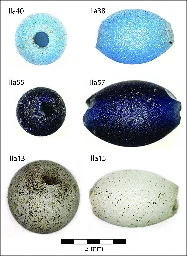
Archaeologists have analyzed the chemical makeup of glass beads from across the Great Lakes region of North America, revealing the extent of Indigenous influence on transatlantic exchange networks during the 17th century AD.
Glass beads were a key component of trade between Europeans and Indigenous Americans during early interactions between the two continents. One of the key actors in these networks was the Wendat Confederacy, which was based in southern Ontario until around 1650, when some Wendat people moved into the Western Great Lakes region.
Beads are a key symbol of European colonization, as they were produced in Europe but had a lasting impact on Indigenous Americans, with beadwork continuing to be integral to many Indigenous cultures to this day.
As such, it was thought that trans-Atlantic bead exchange networks must have been driven by European colonization. The first Europeans colonized the Western Great Lakes region around 1670.
Fargo, but I love it anyway.
Surprisingly, the origins of financial discounting began with 17th-century English clergymen.

In the early 1600s, the officials running Durham Cathedral, in England, had serious financial problems. Soaring prices had raised expenses. Most cathedral income came from renting land to tenant farmers, who had long leases so officials could not easily raise the rent. Instead, church leaders started charging periodic fees, but these often made tenants furious. And the 1600s, a time of religious schism, was not the moment to alienate church members.
But in 1626, Durham officials found a formula for fees that tenants would accept. If tenant farmers paid a fee equal to one year's net value of the land, it earned them a seven-year lease. A fee equal to 7.75 years of net value earned a 21-year lease.
This was a form of discounting, the now-common technique for evaluating the present and future value of money by assuming a certain rate of return on that money. The Durham officials likely got their numbers from new books of discounting tables. Volumes like this had never existed before, but suddenly local church officials were applying the technique up and down England.
Collaborative research by archaeologists, environmental scientists and tribal elders combines science and Indigenous knowledge to tell the story of centuries of life at a glacier’s edge.
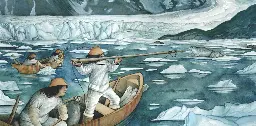
Five hundred years ago, in a mountain-rimmed ocean fjord in southeast Alaska, Tlingit hunters armed with bone-tipped harpoons eased their canoes through chunks of floating ice, stalking seals near Sít Tlein (Hubbard) glacier. They must have glanced nervously up at the glacier’s looming, fractured face, aware that cascades of ice could thunder down and imperil the boats – and their lives. As they drew near, they would have asked the seals to give themselves as food for the people and talked to the spirit of Sít Tlein to release the animals from his care.
Tlingit elders in the Alaska Native village of Yakutat today describe their ancestors’ daring pursuit of harbor seals, or “tsaa,” and the people’s respect for the spirits of the mountains, glaciers, ocean and animals of their subarctic world.
A research project led by the Universitat Rovira i Virgili (URV) and the Max Planck Institute has studied the remains of 25 individuals buried between the 12th and 15th centuries in the castle at Zorita de los Canes, Guadalajara. After exhuming the remains from the castle's cemetery, the research te...
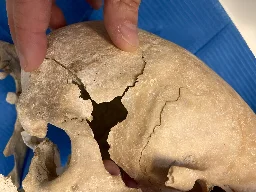
A research project led by the Universitat Rovira i Virgili (URV) and the Max Planck Institute has studied the remains of 25 individuals buried between the 12th and 15th centuries in the castle at Zorita de los Canes, Guadalajara. After exhuming the remains from the castle's cemetery, the research team was able to determine the diet, lifestyle and causes of death of the warrior monks, who were members of the Order of Calatrava.
The results, published in the journal Scientific Reports, have determined that 23 of the individuals died in battle and that the knights of the order followed a diet typical of medieval high society, with a considerable intake of animal protein and marine fish, in an area far from the coast. Unexpectedly, Carme Rissech, a researcher at the URV, identified the remains of a woman among the warrior monks.
Carved out of ivory, the figurine was created during the Upper Paleolithic.
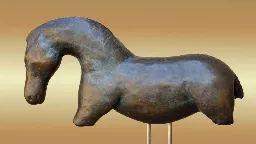
Considered the oldest known horse sculpture made by anatomically modern humans (Homo sapiens), this horse-shaped figurine is carved out of mammoth ivory. The palm-sized artifact measures roughly 1 inch (2.5 centimeters) high and 1.9 inches (4.8 cm) long and includes details such as a carved mouth, nostrils, eyes and mane. Although the ivory horse's head is complete, all four of its legs have been broken off. Archaeologists think the sculpture depicts a stallion, according to the Bradshaw Foundation, which asks, "Is this a stallion trying to impress a mare or a horse arching and kicking backwards against a predator?"
Extensive social networks between different hunter–gatherer groups in the Congo Basin existed long before agriculture arrived in the region. This continent-wide exchange preserved a cultural diversity that evolved thousands of years ago, as researchers from the University of Zurich have shown based ...

Extensive social networks between different hunter–gatherer groups in the Congo Basin existed long before agriculture arrived in the region. This continent-wide exchange preserved a cultural diversity that evolved thousands of years ago, as researchers from the University of Zurich have shown based on musical instruments, specialized vocabulary and genetic information.
Central Africa has been occupied by hunter–gatherer populations for hundreds of thousands of years, according to recent research based on genetic, archaeological and paleoenvironmental data. However, contemporary hunter–gatherers living in the Congo Basin speak languages that they have acquired from their agricultural neighbors, the Bantu, in recent times.
This raises the question as to which elements of ancient cultural diversity in Central Africa stem from long-term evolution and regional cultural exchange predating agriculture, and which aspects are influenced by interactions with farming communities.
A new analysis of two skeletons suggests that three modern human viruses infected Neanderthals around 50,000 years ago.

Neanderthals who lived 50,000 years ago were infected with three viruses that still affect modern humans today, researchers have discovered.
These traces of ancient viruses are the oldest remnants of human viruses ever discovered, New Scientist reported. They are around 20,000 years older than the previous record-holder for the most ancient human virus ever found: a common-cold virus uncovered inside a pair of 31,000-year-old baby teeth in Siberia.
Scientists found the ancient viruses after sifting through DNA sequences drawn from the skeletons of two male Neanderthals originally found in the Chagyrskaya cave, located in the Altai mountains in Russia. Several sequences appeared to be viral in origin, so the team compared them to modern viruses known to cause lifelong infections. They ruled out the possibility that the viruses came from modern humans who handled the skeletons or by predators that fed on them by looking at specific signatures in the viral DNA that differed between the ancient and modern samples.
In this way, they showed that our closest, now-extinct relatives could be infected with three common, modern human viruses: a type of adenovirus, a herpesvirus and a papillomavirus.
Irene Solano Megías, a predoctoral researcher at the Centro Nacional de Investigación sobre la Evolución Humana (CENIEH), has just published the first techno-typological study of the most ancient lithic industry of level VI-B at the Mumba rockshelter in the journal African Archa...
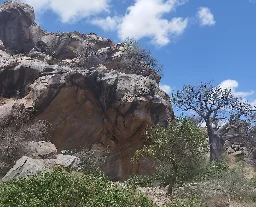
Irene Solano Megías, a predoctoral researcher at the Centro Nacional de Investigación sobre la Evolución Humana (CENIEH), has just published the first techno-typological study of the most ancient lithic industry of level VI-B at the Mumba rockshelter in the journal African Archaeological Review. This site lies in the Lake Eyasi region in Tanzania, and the study has enabled better understanding of the activity of human groups in this region.
This is one of the most important sites in northern Tanzania from the period known as the Middle Stone Age (MSA). It was excavated in the 1930s and level VI-B was excavated between 1977 and 1981, but no data had been published until now.
According to the new study, the level VI-B lithic assemblage at Mumba is the result of settlement by groups of Homo sapiens present in the Lake Eyasi region between 109,000 and 131,000 years ago.
An Oregon State University study has found evidence that Indigenous groups in the Pacific Northwest were intentionally harvesting edible camas bulbs at optimal stages of the plant's maturation as far back as 3,500 years ago.

An Oregon State University study has found evidence that Indigenous groups in the Pacific Northwest were intentionally harvesting edible camas bulbs at optimal stages of the plant's maturation as far back as 3,500 years ago.
The findings contribute to the growing body of research around Traditional Ecological Knowledge and practices, demonstrating the care and specificity with which Indigenous groups have been stewarding and cultivating natural resources for millennia. The work is published in The Holocene journal.
Camas is an ecological and cultural keystone, meaning it is a species on which many other organisms depend and that it features prominently within many cultural practices.
"If you think about salmon as being a charismatic species that people are very familiar with, camas is kind of the plant equivalent," said Molly Carney, an assistant professor of anthropology in OSU's College of Liberal Arts and lead author on the study. "It is one of those species that really holds up greater ecosystems, a fundamental species which everything is related to."
A parasitic worm that can infest the brains of moose appears to be playing a role in the decline of the iconic animal in some regions of North America. Moose populations have been dwindling for years across the country due to many contributing factors, but new research has found the impact of Eleaop...

Moose populations have been dwindling for years across the country due to many contributing factors, but new research at Washington State University has found the impact of Eleaophora schneideri, also known as the arterial worm, has likely been underestimated.
Researchers examined recently deceased Shiras moose in Idaho between March 2020 and July 2022. While the parasitic roundworm E. schneideri was not detected in any of the animals found in north Idaho, it was present in 10 of the 20 adult moose studied in the southeastern portion of the state. Nine of the infected not only had adult worms in their major arteries but their brains were littered with microfilariae, the microscopic early life stage of the worm.
"The microfilaria are just scattered throughout their brains, and even though the damage from each is miniscule, they're basically shot-gunning the whole brain," said Kyle Taylor, a pathologist at WSU's Washington Animal Disease Diagnostics Laboratory. "We hypothesize the cumulative effects of large numbers of microfilariae in the brain may be associated with increased morbidity or chance of mortality, with mortality more likely in cases with larger numbers of worms."
The carved bear bone is one of the earliest human-made artifacts with "symbolic culture" unearthed in Europe.
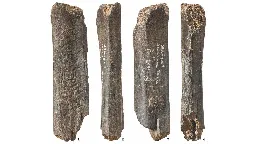
A nearly 130,000-year-old bear bone was deliberately marked with cuts and might be one of the oldest art pieces in Eurasia crafted by the Neanderthals, researchers say.
The roughly cylindrical bone, which is about 4 inches long (10.6 centimeters), is adorned with 17 irregularly spaced parallel cuts. A right-handed person most likely crafted the piece, probably in one sitting, a new study finds.
The carved bone is the oldest known symbolic art made by Neanderthals in Europe north of the Carpathian Mountains. It gives scientists a glimpse into the behavior, cognition and culture of modern humans' long-dead cousins, who lived in Eurasia from about 400,000 to 40,000 years ago, when they disappeared.
in March a farm worker who reported no contact with sick or dead birds, but who was in contact with dairy cattle, began showing symptoms in the eye and samples were collected by the regional health department to test for potential influenza A. Experts have now confirmed the first case of highly path...

In March a farm worker who reported no contact with sick or dead birds, but who was in contact with dairy cattle, began showing symptoms in the eye and samples were collected by the regional health department to test for potential influenza A. Experts have now confirmed the first case of highly pathogenic avian influenza transmission from a mammal (dairy cow) to a human.
Raquel Hernando, a Juan de la Cierva researcher associated with the European project TIED2TEETH, at the Centro Nacional de Investigación sobre la Evolución Humana (CENIEH), is the lead author of a paper published in the American Journal of Biological Anthropology, in which the teeth of...
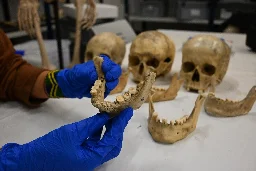
Raquel Hernando, a Juan de la Cierva researcher associated with the European project TIED2TEETH, at the Centro Nacional de Investigación sobre la Evolución Humana (CENIEH), is the lead author of a paper published in the American Journal of Biological Anthropology, in which the teeth of 84 adult individuals found at eight sites in the northeast Iberian Peninsula were analyzed to offer new perspectives on the diet of these populations in recent prehistory.
This study shows that the mixed diet of the agropastoral groups of this period, which covers from the Middle Neolithic to the Middle Bronze Age, was made up of cereals with regular intake of meat or dairy products, though each group had its own dietary specialization.
Refractometers are one of the most misunderstood tools in home brewing. The two biggest mistakes are using the sg side of a dual brix/sg scale (the conversion is non-linear, and the scale will likely become increasingly off between the two the higher the gravity), and using one like a hydrometer, ie simply subtracting final from original gravity. Instead, only use the brix side of the scale, and use a calculator such as this one to determine the actual specific gravity/abv once fermentation begins: https://www.brewersfriend.com/refractometer-calculator/ (don't worry too much about the Wort Correction Factor.) Do that, and your refractometer will be your best friend.
This dude's train of thought is, "my constituents are fucking morons, they'll eat this shit up!"
Human factors − such as how people produce food and how they organize themselves and live together − influence disease outbreaks.
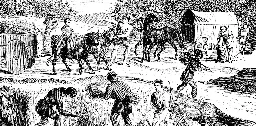
The last pandemic was bad, but COVID-19 is only one of many infectious diseases that emerged since the turn of this century.
Since 2000, the world has experienced 15 novel Ebola epidemics, the global spread of a 1918-like influenza strain and major outbreaks of three new and unusually deadly coronavirus infections: SARS, MERS and, of course, COVID-19. Every year, researchers discover two or three entirely new pathogens: the viruses, bacteria and microparasites that sicken and kill people.
While some of these discoveries reflect better detection methods, genetic studies confirm that most of these pathogens are indeed new to the human species. Even more troubling, these diseases are appearing at an increasing rate.
Despite the novelty of these particular infections, the primary factors that led to their emergence are quite ancient. Working in the field of anthropology, I have found that these are primarily human factors: the ways we feed ourselves, the ways we live together, and the ways we treat one another. In a forthcoming book, “Emerging Infections: Three Epidemiological Transitions from Prehistory to the Present,” my colleagues and I examine how these same elements have influenced disease dynamics for thousands of years. Twenty-first century technologies have served only to magnify ancient challenges.
Never! That one fish resulted in over 150,000,000 jobs being created.
The lawnmower scene in Dead Alive?
You mean the ones where all the comments say [deleted]?
So what if you travel, can you not stream from a hotel since it's a different IP address?
I always assumed the two communities were the result of some mod-drama/schism, if that's not the case, nuking one makes perfect sense to me. Unfortunately the lesser used and formerly mod-abandoned community has the better underlying name, but what can you do.
I use wX from f-droid. It uses data from the National Weather Service, so it might not be useful if you are located outside the US.
I've used them for years. Most years I have W-2s from multiple states, they're the only free e-file that covers all states (with income tax) last I checked (I think h&r block did briefly, but I don't think they even do free file anymore). They also do my state's renters rebate, which most other free file providers don't. I did have some issues several times with it switching me to only paid options at the very end, but a message to support always fixed it.
I believe Bhutan is generally considered to be the happiest nation, but I've never been there, so don't quote me on that.
Did it ever bother anybody else that "united" and "divided" don't really rhyme?
Xcrement
Shaving. Every single time someone is shaving in any movie or show, they always make a few random strokes on one side of the face, maybe a little on the chin, and then they always stop halfway through. Gets my OCD up. Then to make thing worse, they always wipe up the rest of the shaving cream with a towel and casually toss the towel to the side. Covered in shaving cream. With a half-shaved face. Monsters.
Fourth paragraph from the end:
Scholars have speculated that the ointments often mentioned in accounts of such flight might have functioned as hallucinogens, producing sensations of flying. The most thorough study of these accounts, however, finds that such references rarely appear in voluntary testimony. They come instead from authorities recording, and often reshaping, what accused witches said.
 Recreational Placebos @midwest.social
Recreational Placebos @midwest.social Where can we get these placebos? Maybe there's some in this truck...